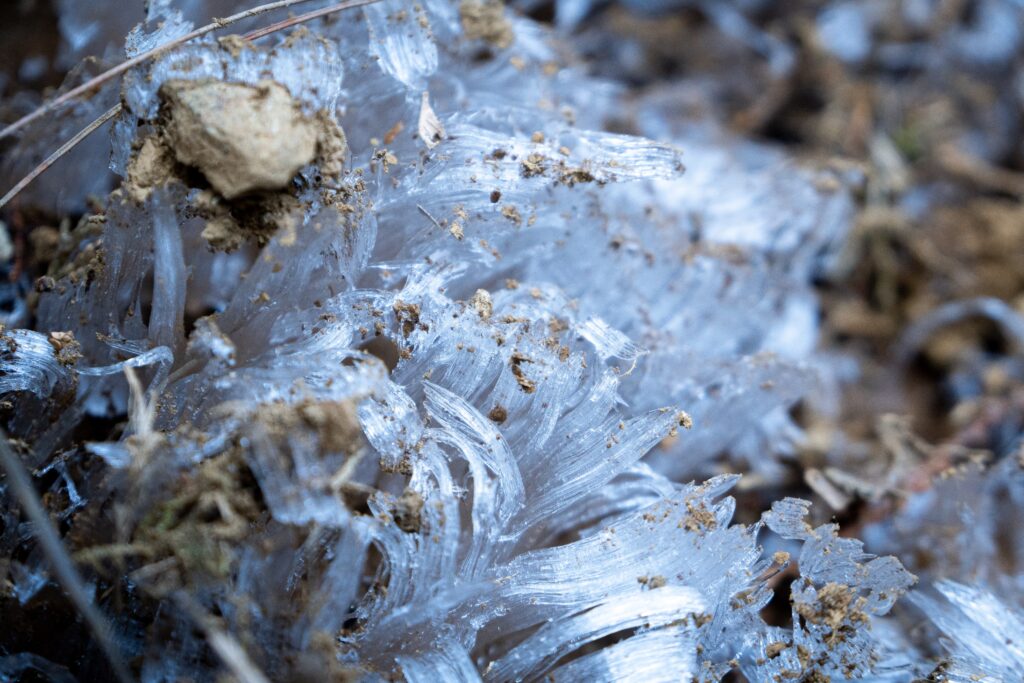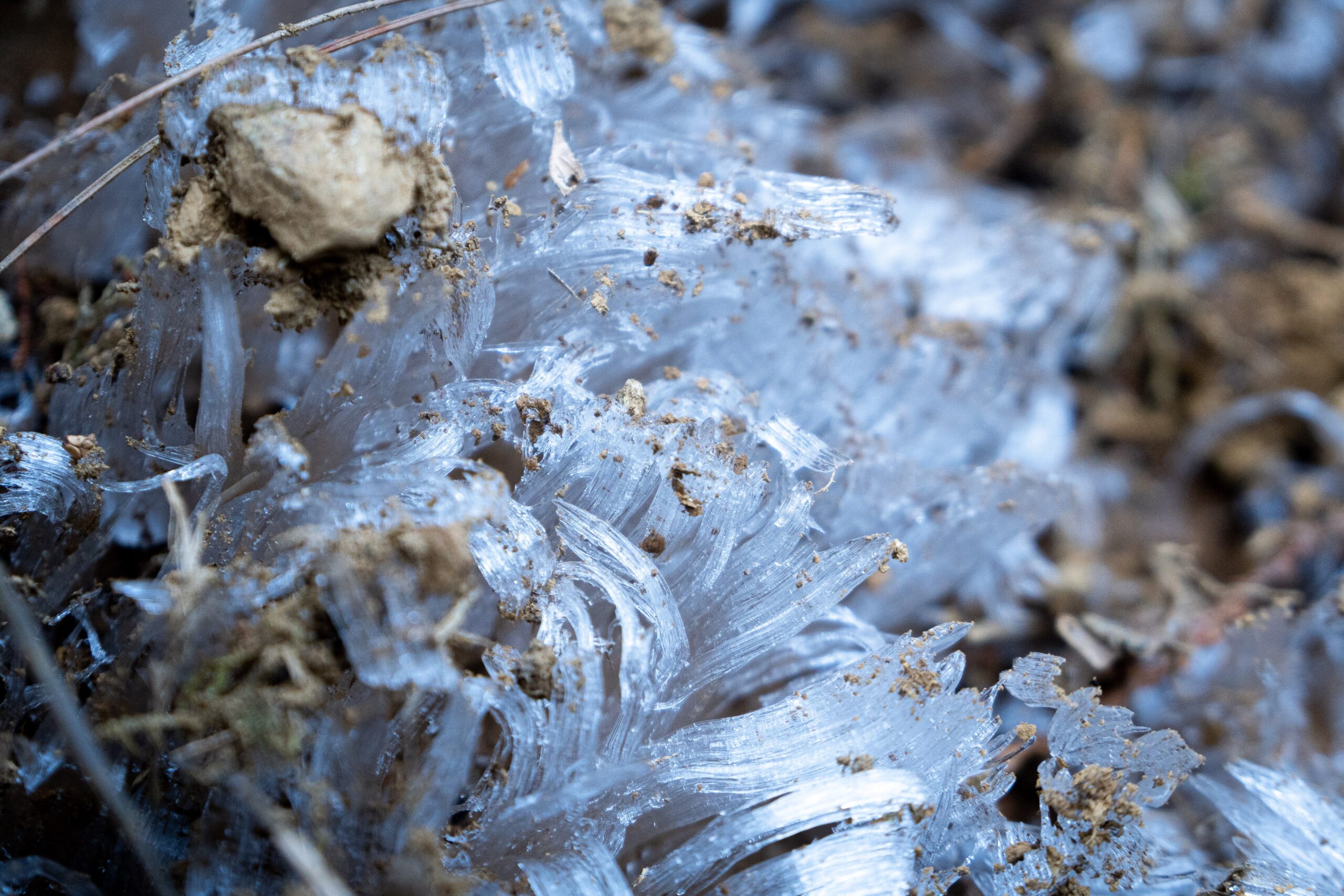七十二候とは、古来から日本で使われてきた季節の移り変わりを24の節気と72の候に分けて表したものです。そのうち、立冬の次候である「地始凍(ちはじめてこおる)」は、大地が凍り始める頃を表しています。
地始凍の時期は、11月12日から16日頃にあたります。この頃になると、日照時間が短くなり、気温もぐっと下がってきます。朝には霜が降り、場所によっては霜柱が見られるようになり、大地が冬の訪れを告げます。
霜柱
霜柱とは、地中の水分が凍ってできる氷の柱です。空気中の水蒸気が地物に昇華してできる霜とは別のでき方で、湿気の多い柔軟な土質に生じます。霜柱は、地面から数センチから数十センチの高さまで伸び、まるで雪の結晶のように美しく、冬の風物詩となっています。
地始凍は、冬の訪れを感じさせる季節です。寒さが増し、冬支度を進めていく頃ですが、霜柱や紅葉などの美しい景色を楽しむのもこの時期ならではの楽しみです。

Title: 地始凍 (ちはじめてこおる) ~The Arrival of Winter~
Seventy-two terms are a seasonal division of 24 solar terms and 72 terms used in Japan since ancient times. Of these, the next term after Risshun is “地始凍 (ちはじめてこおる)”, which means that the earth starts to freeze.
The period of 地始凍 is from November 12 to 16. At this time, the days become shorter and the temperature drops sharply. Frost falls in the morning, and in some places, frost pillars can be seen, announcing the arrival of winter to the earth.
Frost pillars
Frost pillars are ice pillars formed by freezing underground water. They are formed in a different way from frost, which is formed by the sublimation of water vapor in the air to the ground, and are found in moist and flexible soil. Frost pillars can grow from several centimeters to several tens of centimeters high, and are beautifully like snowflakes, making them a winter spectacle.
地始凍 is a season that feels the arrival of winter. It is a time to prepare for winter as the coldness increases, but it is also a time to enjoy the beautiful scenery such as frost pillars and autumn leaves, which are unique to this season.

コメント